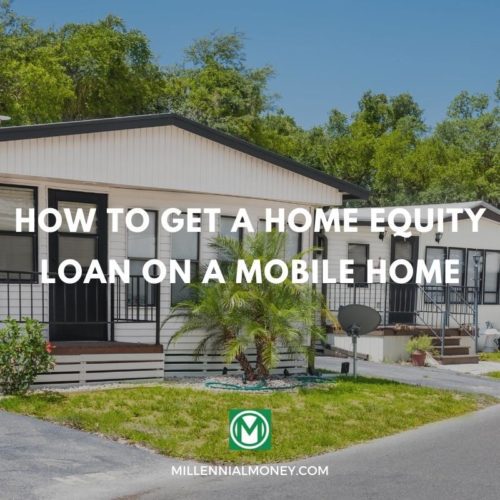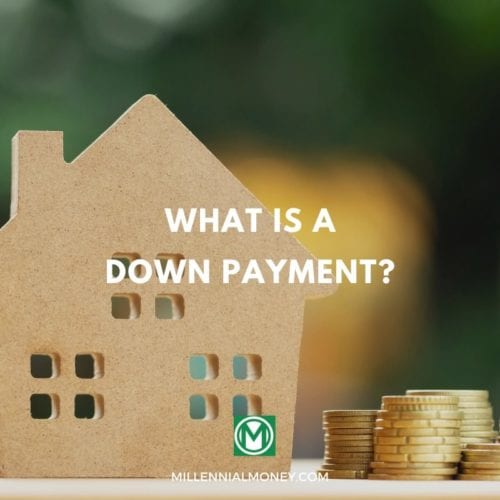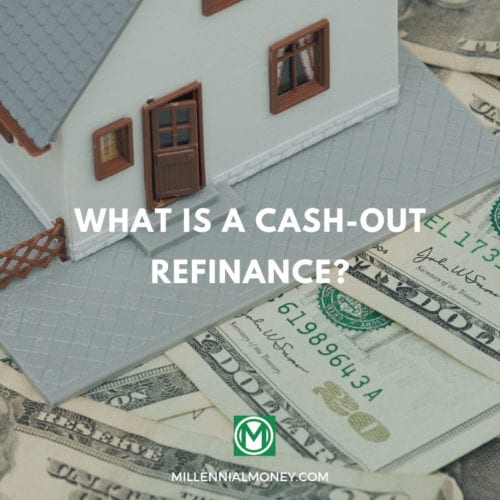One of the most popular personal financing options in recent decades has been the HELOC.
What is a HELOC? It’s a type of credit facility that enables you to access the equity in your home, but to do so with the most flexible terms possible.
HELOC’s are only loosely connected to mortgages, in that they’re also secured by your personal residence. But apart from that, they function more like credit cards. Rather than taking a flat loan amount with fixed monthly payments and a fixed interest rate, instead, you’re provided with a credit line secured by your home.
HELOC’s have plenty of advantages, including low interest rates, high credit limits, low-cost, and easy accessibility. What’s more, HELOCs are available from many different loan sources, giving you plenty of options to find a lender that will give you the best loan terms and pricing.
But for all their advantages, HELOCs do involve some risks that you need to be aware of. Properly used, HELOCs are one of the very best ways to borrow money. But it’s precisely because they’re so flexible and user-friendly that HELOCs can also be risky. But if you’re aware of those risks, HELOCs can be one of the best tools in your portfolio of financial services.
What is a HELOC?
A HELOC, otherwise known as a Home Equity Line Of Credit, is essentially a credit line secured by your home. And because it is, you’ll typically get a much larger credit line than you will with a completely unsecured credit line, like a credit card.
The interest rate will also be much lower than other credit line types. For example, while credit cards typically have interest rates ranging between 13.99% and 26.99%, HELOC interest rates are usually in single digits.
Nationally, the average rate on a HELOCs is 5.99%, but many lenders charge even less, especially if you have excellent credit and a strong financial profile.
One of the biggest advantages with a HELOC is that the funds can be used for just about any purpose. While you can certainly use them to make improvements to the home securing the credit line, you can also use them for other purposes completely unrelated to the property.
That includes consolidating high-interest credit card debt, purchasing a car, investing in a business, or even purchasing other real estate.
How Does a HELOC Work?
A HELOC depends largely on your home equity. The more you have, the more likely you are to obtain a HELOC, and the larger the credit line will be.
Each mortgage lender has its own guidelines for calculating the amount of a HELOC. Most typically, they’ll lend somewhere between 80% and 90% of the value of your home, less any existing indebtedness.
For example, let’s say your home is worth $500,000, and you currently owe $300,000 on the first mortgage. The bank will lend up to 85% of the value of your home, or $425,000.
But since you already owe $300,000 on the first mortgage, the HELOC will be limited to $125,000 ($425,000, less $300,000 for the existing first mortgage).
Also, be aware it doesn’t matter if the existing first mortgage is held with the same lender or another, it’ll still be deducted from the total amount of credit available.
HELOC interest rates are typically based on an index, like the lender’s Prime Rate (or that of a recognized third party), plus a margin. For example, the current Federal Reserve Prime Rate is 3.25% (as of 4/8/20).
A lender may charge the prime rate only to borrowers with the best credit profiles. But they may add a margin of 1%, 2%, 3%, or more to the prime rate for customers with lower credit scores.
However, HELOC interest rates don’t strictly follow the indicated calculations. They often come with “teaser rates” that may be substantially lower than the fully indexed rate on the credit line.
For example, a bank may extend a HELOC to a customer with excellent credit with an initial rate of 2.99%. That rate may be effective for the first six months, or one year the credit line is open. More than anything, it’s an inducement for the lender to draw in customers with top credit scores.
How HELOC Funds are Accessed
The term of a HELOC can vary by lender and loan type. The full term of the loan can be anywhere from 10 years to 30 years. But this will be split into parts. The first is the draw period, which is followed by the repayment period.
As the name implies, the draw period is the timeframe during which you may access the funds from the credit line. You can draw as much or as little as you want, up to the maximum credit line allowed.
To access your funds, the lender may provide you with paper checks or even a debit card.
Interest will be charged on the amount of the line outstanding, and this is often done with interest-only payments during the draw period. But even if the initial repayment is set up as interest-only, you always have the option to pay principal, or even pay off the full amount of the outstanding balance entirely. As you repay your draws against the line, you’ll be restoring the credit limit.
Eventually, however, the draw period ends, and you’ll enter the repayment period. It’s during this time that you will begin making principal payments in an amount sufficient to pay off the outstanding principal balance. The lender will likely freeze further withdrawals during this time. However, home equity lines of credit tend to be flexible arrangements, so the lender may adjust either the draw period or the repayment period – or both – well into the loan term.
In a typical HELOC, you can expect to have a draw period equal to about one-third of the full loan term, with the repayment period covering the difference. For example, a HELOC with a 15-year term might include a five-year draw period and a 10-year repayment period.
Though HELOC loan fees are typically much lower than those of first mortgages, at least by dollar amount, they can be similar as a percentage of the loan amount taken. What’s more, fees charged on HELOCs vary by lender, and are not nearly as standard as they are with first mortgages. A lender may charge any of the following fees – or not:
- Application fee, which will vary by lender or may not be charged at all.
- An appraisal fee.
- Title and attorney fees.
- Loan origination fees or points, though these are not typical.
- An annual fee, at least during the draw period – which is very common.
- A draw fee, which may be charged each time you access the credit line.
But once again, since HELOCs are much less standard than first mortgages, a lender may waive some or all these fees for their best customers.
Is a HELOC a Good Idea?
The answer to this question really depends on your personal situation. If you have substantial equity in your home as well as excellent credit, you can get a HELOC with a very low interest rate.
And if you’re only looking to use it for short-term needs, and you have the capability to repay credit line draws quickly, a HELOC can be the perfect alternative to high interest credit cards.
As I pointed out earlier in this article, interest rates on HELOCs are not only lower than they are for credit cards, but much lower. Even with an interest rate of, say, 6%, a $10,000 draw would cost only $50 per month in interest, and that’s only if you keep an outstanding balance.
Still, another advantage of HELOCs is the potentially large amount of the credit line. Though it can be difficult to get a credit card with a credit line greater than $10,000, it’s possible to get a HELOC of $100,000 or more if your home has sufficient equity.
Are There Any Downsides to a HELOC?
There are risks to taking any kind of loan, and that includes HELOCs. In fact, despite the attractive terms that commonly come with HELOCs, they do carry a heightened degree of risk, since they’re secured by your primary residence.
Let’s look at those risks as well as some other limitations.
- HELOC terms can vary from one lender to another, so you’ll need to know what the specific rules are for any home equity line of credit you apply for.
- Though you may have been drawn to a HELOC by a low initial rate (due largely to the very low interest rate environment we’re in now), they are variable-rate loans. If your HELOC is tied to the prime rate, and that jumps by six percentage points, your 3.25% HELOC APR could rise to 9.25%.
- The interest-only payment structure common during the draw period may lure you into borrowing more against your HELOC that you can easily afford to repay.
- HELOCs are generally reserved for owner-occupied properties only. That means you won’t be able to get one against a vacation home or an investment property.
- A HELOC adds debt to your home. Anytime you increase the indebtedness on your home, whether it’s from a first mortgage, second mortgage or a HELOC, you’re increasing the risk on the property. Greater indebtedness increases the likelihood you could lose your property in foreclosure.
- Just as is the case with credit cards, HELOCs can become addictive. The combination of ready accessibility and very attractive terms can make it very easy to run up your credit line balance.
- Though it’s unlikely to happen, it’s a possibility that the lender could freeze your credit line, due to a drop in your credit score, or a serious disturbance in the economy. HELOC freezes became fairly common in the last recession after the credit markets seize up.
None of this is to imply that you shouldn’t take a HELOC. But if you do, you need to be aware of the risks you’ll be taking on.
And if you are, you’ll be in a better position to both minimize those risks or avoid them entirely.
Where is the Best Place to Get a HELOC?
National lenders are providing HELOC’s, often at very aggressively priced rates. But their programs may not be available in all states, and pricing may vary considerably from one state to another.
Generally speaking, the most common sources for HELOCs are local banks and credit unions. Not only are they well acquainted with the local housing market, but they also may use HELOCs as a way to bring in new customers who will open other accounts.
For example, drawn by a low teaser rate on a HELOC, a bank may bring in a new customer who opens a checking account, invests in certificates of deposit, applies for a car loan, and takes a credit card.
But whether you use a bank, a credit union, or a national lender, be sure to shop around. And just as important, you need to study the terms of any HELOC you’re considering carefully. The saying “the devil is in the details” shouldn’t be taken lightly when it comes to HELOCs.
Be sure to look past the initial rate, which may be just a teaser. Instead, find out what the rate is based on so you can have a better idea of what it will be over the longer term.
Also, look closely at fees. Some lenders may not charge any at all, while others may hit you with a series of seemingly small fees that can add up to serious money over the term of the HELOC.
Finally, be honest with yourself about your ability to manage credit. If your primary motivation in taking a HELOC is to consolidate high-interest credit cards, you’ll need to be sure you can avoid building up more credit card debt after consolidating with the HELOC.
In the end, a HELOC can be an excellent way to save interest on credit cards, but it may only be a delay on the way to bankruptcy court if the HELOC is little more than a temporary effort to fix a longer-term debt problem.





No comments yet. Add your own